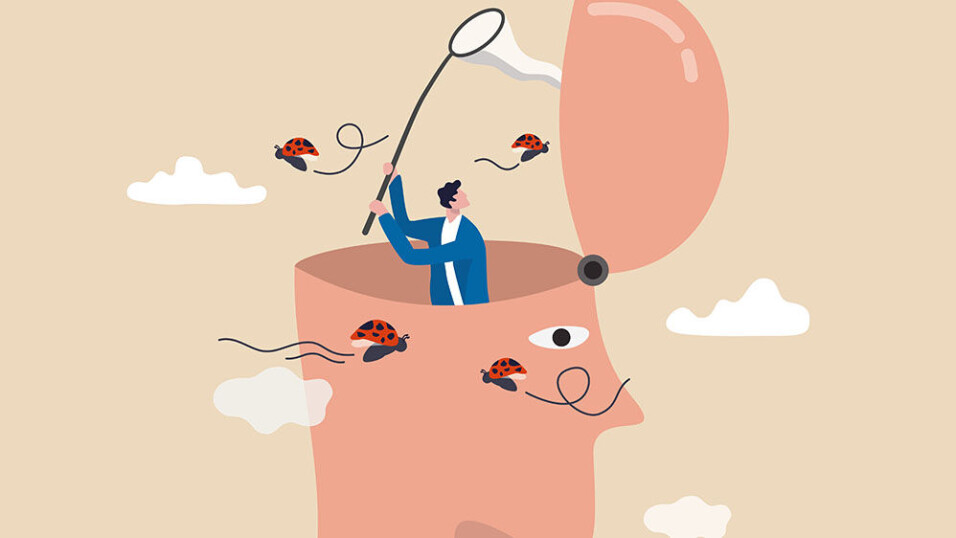THIS ARTICLE/PRESS RELEASE IS PAID FOR AND PRESENTED BY University of Oslo - read more

Your brain is always looking for patterns - even when there are none
This happens regardless of where you direct your attention, as the brain even attempts to systematise background noise.
“The brain always tries to utilise all kinds of information to understand what’s going on,” Julian Fuhrer says.
He is a research fellow at RITMO Centre for Interdisciplinary Studies in Rhythm, Time and Motion.
In his research, Fuhrer has investigated how the brain encodes patterns in the background while performing other tasks such as reading a book.
“The brain does this automatically. For example when you watch the sky and you suddenly realise that the clouds form shapes,” he says.
Researchers assume that these mechanisms are at work even during sleep and in a coma. Fuhrer has gained access to unique data that clearly shows how this works.

Electrodes on the brain
Whatever your brain does, it can be captured through electrical signals. It can, among other approaches, be measured with scalp electroencephalography (EEG) where electrodes are placed on the head.
However, when treating patients suffering from drug-resistant epilepsy, electrodes are placed directly on the brain.
This method is called iEEG, where i stands for intracranial. It is more accurate because the signals contain information from neurons very close to the point of contact.
Additionally, it can measure brain activity with a very high temporal resolution, resulting in neurophysiological recordings with relatively little ‘noise’.
Fuhrer gained access to such data.
“These recordings enabled us to provide new neurophysiological evidence to show that our brains continuously aim to systemise the immediate environment, and regard even things we don’t pay any attention to. This evidence helps to understand how we perceive and how the respective underlying brain mechanisms are implemented,” says Fuhrer.
The brain reacts to every note
Fuhrer and colleagues saw what happened in the brain when the patients concentrated on reading a book while wearing headphones where they were exposed to an uneven stream of tones.
“It turned out that even if the brain does not take the sound into account, it makes calculations based solely on the sound sequences. It looks for connections between sounds without attention being involved,” says Fuhrer.
The tones varied from, for example, high-frequency sounds to quieter sounds. The different tone types followed each other randomly and just occurred in the background. Nevertheless, the brain tried to systematise the tones by encoding patterns between them.
“We can see the brain’s response to each tone in the electrical signals and how it processes the various tones,” he says. “The brain does this automatically although there is no behavioural relevance in doing so. There is no sense to encode relations between these tones, but the brain does it anyway."
A new method for the researchers’ toolbox
Through their work with brain signals, Fuhrer and his colleagues developed a method for optimising the use of such data. They hope this method will be useful for other researchers.
“The brain constantly processes, encodes information, stores information, and retrieves information from memory,” Fuhrer explains.
By treating brain activity from that perspective, he was able to distinguish different brain responses and identify where in the brain the various responses occurred.
“The results show that our method worked well, better than conventional methods,” he says.
The method will not necessarily turn the field of brain research upside down.
“But I hope it establishes as an approach in the researchers' toolbox. A method which can be used to analyse neurophysiological data with the potential to get the most out of it,” says Fuhrer.
Reference:
Julian Fuhrer: Implicit Encoding of Seemingly Unstructured Auditory Stimuli, Doctoral dissertation at the Department of Informatics, University of Oslo, 2023. (Read about his defence)

This article/press release is paid for and presented by the University of Oslo
This content is created by the University of Oslo's communication staff, who use this platform to communicate science and share results from research with the public. The University of Oslo is one of more than 80 owners of ScienceNorway.no. Read more here.
See more content from the University of Oslo:
-
Queer opera singers: “I was too feminine, too ‘gay.’ I heard that on opera stages in both Asia and Europe”
-
Putin’s dream of the perfect family
-
How international standards are transforming the world
-
A researcher has listened to 480 versions of Hitler's favourite music. This is what he found
-
Researcher: "AI weakens our judgement"
-
New, worrying trend among incels, according to researcher




































